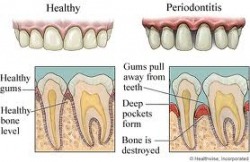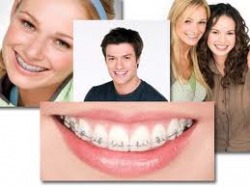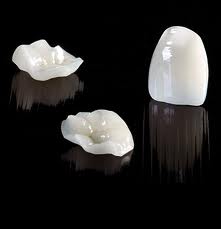
Periodontitis
Periodontitis is a set of inflammatory diseases affecting the periodontium — that is, the tissues that surround and support the teeth. Periodontitis involves progressive loss of the alveolar bone around the teeth, and if left untreated, can lead to the loosening and subsequent loss of teeth. Periodontitis is caused by microorganisms that adhere to and grow on the tooth’s surfaces, along with an overly aggressive immune response against these microorganism. A diagnosis of periodontitis is established by inspecting the soft gum tissues around the teeth with a probe (i.e. a clinical exam) and by evaluating the patient’s x-ray films (i.e a radiographic exam), to determine the amount of bone loss around the teeth. Specialists in the treatment of periodontitis are periodontists; their field is known as “periodontology” or “periodontics”.
-Wikipedia

Early Orthodontic Treatment-Beyond Braces
Orthodontic treatment in young children is known as interceptive orthodontics, in which intervention begins before the child starts first grade. At this age, tooth development and jaw growth have not been completed, so certain conditions, like crowding, are easier to address. Treating at a young age, may help shorten length of time braces would be worn, if not eliminate the need for braces.
Before permanent teeth have come in, it may be possible to help teeth to erupt (emerge through the gums) into the proper positions. It’s common, for example, for the dental arch to be too small to accommodate all of the teeth. A few decades ago, the solution for crowding was to extract some of the adult teeth, then use fixed braces to position the teeth properly. Early intervention takes advantage of the fact that a child’s jaw is still growing. For example, a device called a palatal expander may be used to expand the child’s upper arch. Once the arch is the proper size, there’s a better chance that the adult teeth will emerge naturally where they should. If all teeth have erupted and there is still a great deal of crowding, some permanent teeth may have to be extracted to align the teeth properly.
“It is important to note that children who receive interceptive orthodontics may still need braces or other orthodontic appliances later,” Dr. Cangialosi says. “However, this early treatment may shorten and simplify future treatment and may eliminate the need for more drastic measures such as the need to extract permanent teeth in the future.” -(http://www.colgate.com/app/Colgate/US/OC/Information/ToothWhiteningCosDent/Orthodontics/Orthodontics/EarlyOrthodontics
MayMeanLessTreatmentLater.cvsp)

Porcelain Crowns – Eliminate dark lines from metal crowns with new highly esthetic metal free crowns , for a smile that’s as strong as it is beautiful.
